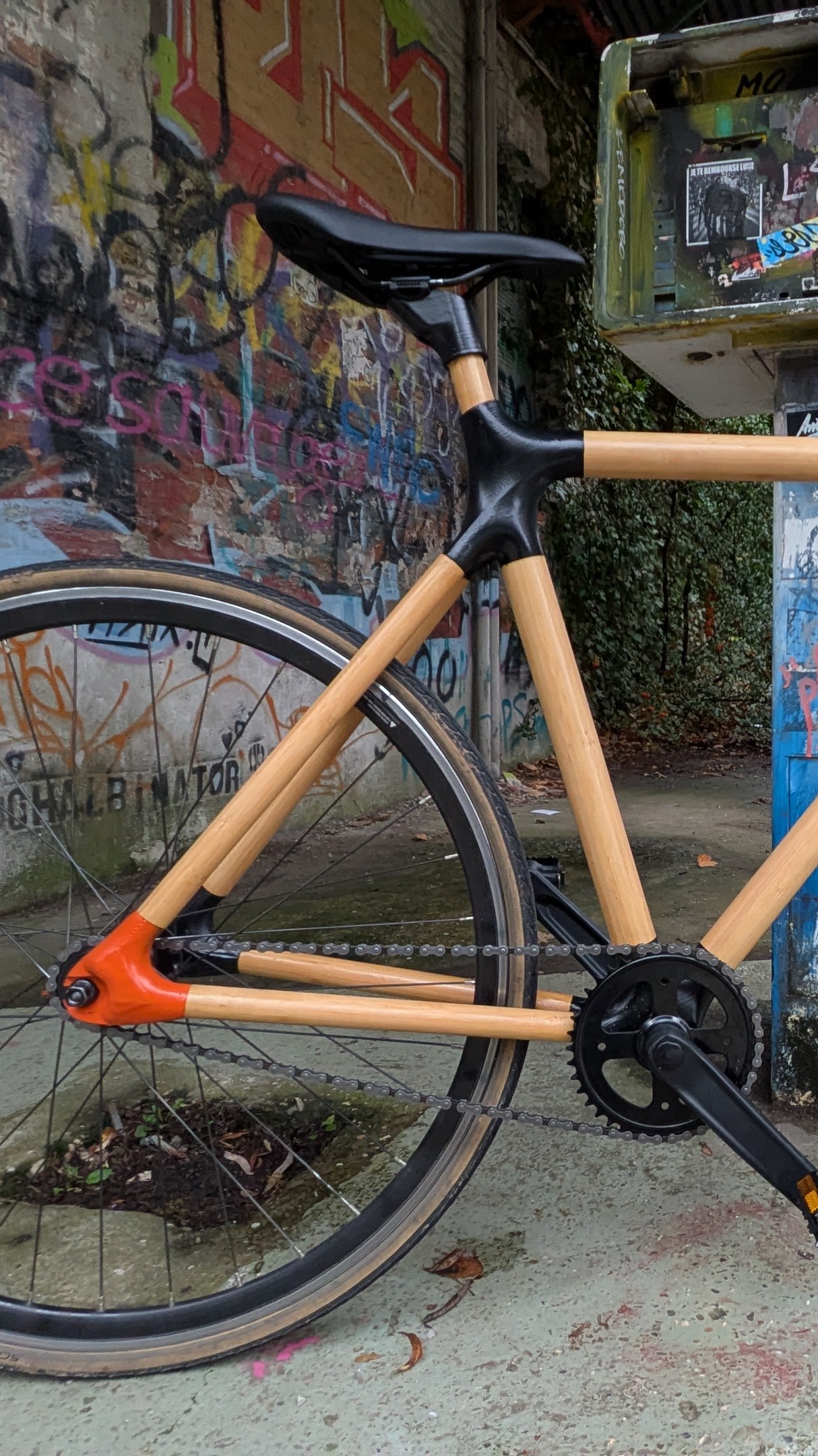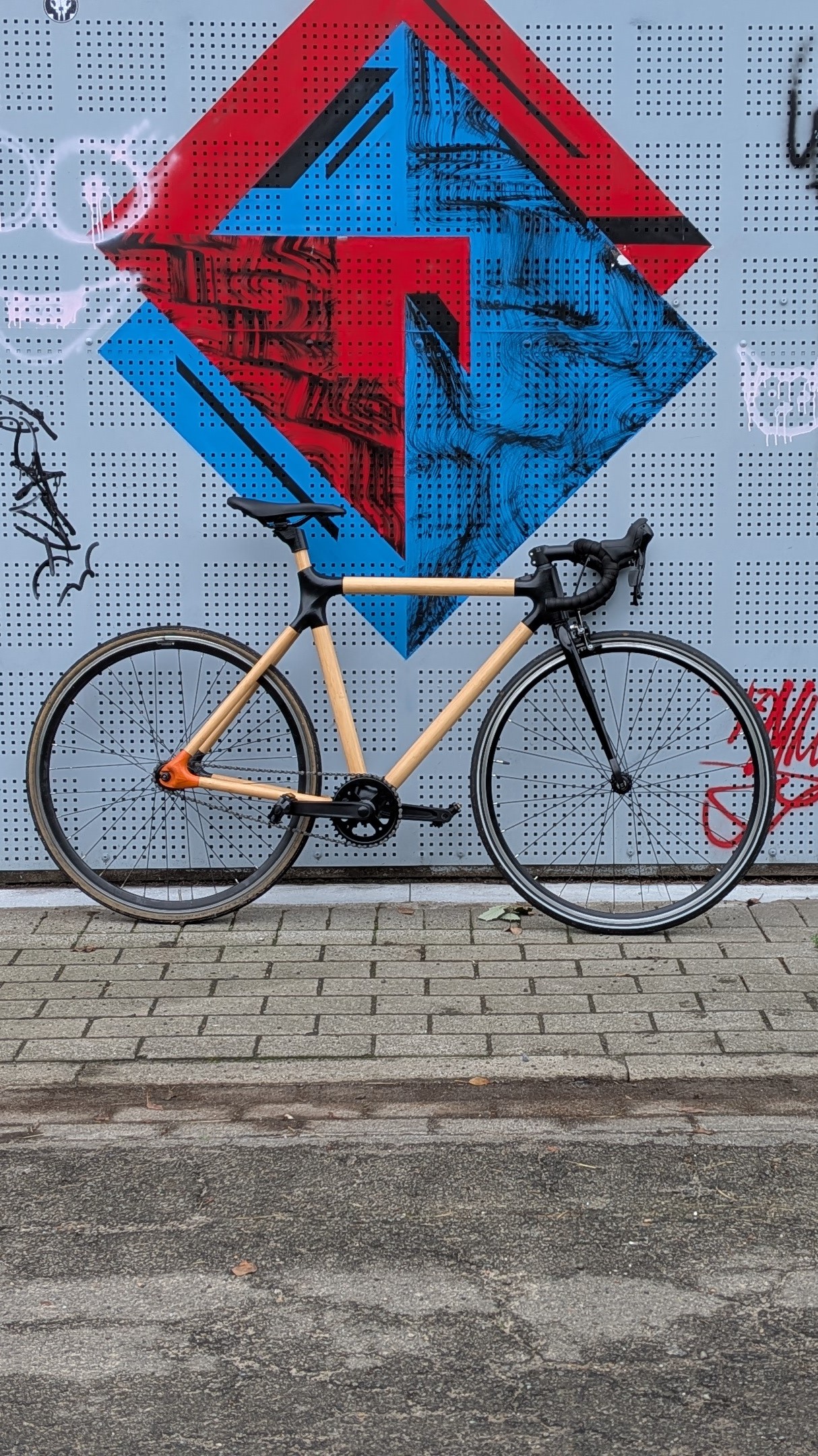Yesterday I shared the very first batch of images and the project outline online, and honestly, the warm feedback from the community felt great. Along with that came a mountain of critique—some of it completely fair, some unintentionally hilarious, and some clearly driven by mild panic. And yes, posting a short riding clip without a helmet was… not my finest moment.
So I went through every comment and suggestion, and with a bit of help from GPT I pulled everything together into the summary you’ll find below this post.
All things considered, I’m still really happy with the feedback. A few insights were genuinely helpful, and I’m taking them to heart. Over the next couple of weeks I’ll keep test-riding the bike (safely this time) on private roads and pavements, fully geared up like a responsible adult.
Meanwhile, I’ll keep searching for aesthetically pleasing ways to reinforce the frame and dig deeper into methods for testing its actual strength. I’m also planning to shift more focus toward indoor trainers for a while—it’s a different angle, and working on that product gives me room to continue exploring the DIY bike-frame idea in the background.
https://www.reddit.com/r/3Dprinting/comments/1oys7ld/3d_printed_bike_frame/





Community Feedback Summary — OpenFrame V0.2
Following the release of the first ride-tested prototype of the OpenFrame V0.2 bamboo–PA12-CF bicycle frame, the project received significant attention on Reddit’s r/3Dprinting community, reaching more than 1.3 million views, 5,900 upvotes in 12 hours, and several hundred comments. Below is a consolidated overview of the major themes, concerns, and technical recommendations raised by the community.
General Sentiment
The feedback ranged from enthusiastic support for the experimental approach to strong concerns about safety and long-term reliability.
Comments fall broadly into three categories:
- Supportive & Positive:
Many users praised the design, craftsmanship, material choice, and the open-source ambition behind the project. Several saw value in exploring modular frame concepts and were impressed with the stiffness and aesthetics of the bamboo–CF hybrid structure. - Constructive & Neutral:
A large number of contributors asked technical questions about CAD, epoxy bonding, bamboo tubes, material properties, and future plans such as the Kickr Core indoor trainer frame. - Critical & Safety-Focused:
The majority of comments expressed concerns related to mechanical safety, fatigue failure, and the inherent limitations of FDM prints under multi-directional loads. These concerns were often paired with suggestions for testing or structural reinforcement.
Key Technical Concerns
Across hundreds of comments, several recurring engineering risks were highlighted:
1. Layer Adhesion & Print Orientation
Users pointed out that many lugs experience loads in directions where FDM layer adhesion is weakest, particularly at the head tube, dropouts, and seat cluster. These were consistently identified as the most likely failure points.
2. Fatigue and Creep in Nylon Composites
While PA12-CF is regarded as a strong FDM material, community members noted:
- significant strength reduction over time due to moisture absorption,
- potential for creep under sustained loads,
- reduced impact resistance at low temperatures.
3. Catastrophic Failure Mode
Unlike metals, printed composites and bamboo tend to splinter or shard when they fail. Multiple users stressed the risk of sudden, non-ductile failure in critical lugs.
4. Liability and Open-Source Distribution
Several discussions touched on liability concerns. The consensus:
- Releasing STLs is legally safe if framed as “for experimental and educational use,”
- but publishing them for road use without testing may create ethical concerns.
Community Suggestions for Improvement
A large number of comments provided well-informed recommendations. The most frequent and actionable include:
Material & Structural Reinforcement
- Wrap printed lugs with carbon fibre or fiberglass, vacuum bag if possible.
- Apply epoxy coating for moisture protection and UV resistance.
- Integrate bushings, steel inserts, or machined interfaces for bottom brackets and dropouts.
- Add internal tension elements (threaded rod or steel cable) running through tubes to keep lugs compressed.
Testing & Validation
- Perform ISO 4210 fatigue and impact tests (or simplified equivalents).
- Conduct static loading with weighted pedals and repeated drop tests.
- Test individual joints before full-frame cycling.
- Explore FEA with anisotropic material models for early failure mapping.
Manufacturing Method Evolution
Some suggested using FDM primarily for:
- molds for carbon fibre layup, or
- patterns for lostPLA casting,
while keeping the open-source modularity intact.
Additional Project Opportunities Highlighted
Amid concerns and jokes, several users expressed genuine interest in:
- A Kickr Core–specific frame as a safer and more predictable application.
- A children’s bike variant, given dramatically lower loads.
- Using the printed framework as a prototyping platform for geometry testing. These sub-directions were widely acknowledged as more realistic near-term applications.
Overall Takeaway
The response to OpenFrame V0.2 was overwhelmingly engaged, and while safety concerns dominated the thread, the constructive feedback offers a clear roadmap for refinement:
- reinforce joints,
- increase safety margins,
- introduce mechanical interfaces,
- perform structured testing,
- and frame the open-source release responsibly.
The community’s reaction confirms what this project is meant to be:
an open, evolving experiment to explore the boundaries of what can be built using modern materials, additive manufacturing, and accessible fabrication techniques. The next iterations of OpenFrame will build directly on this pool of insights.